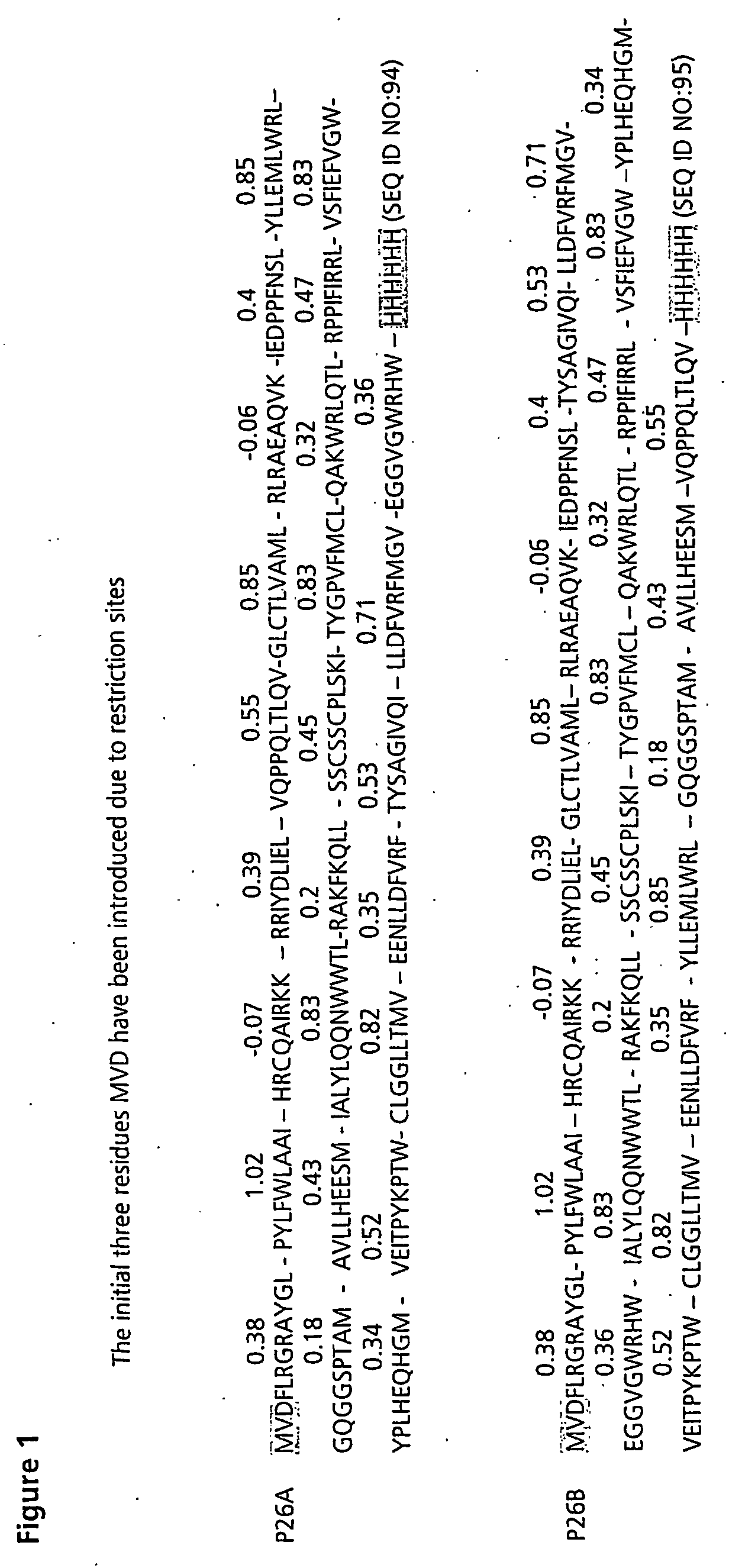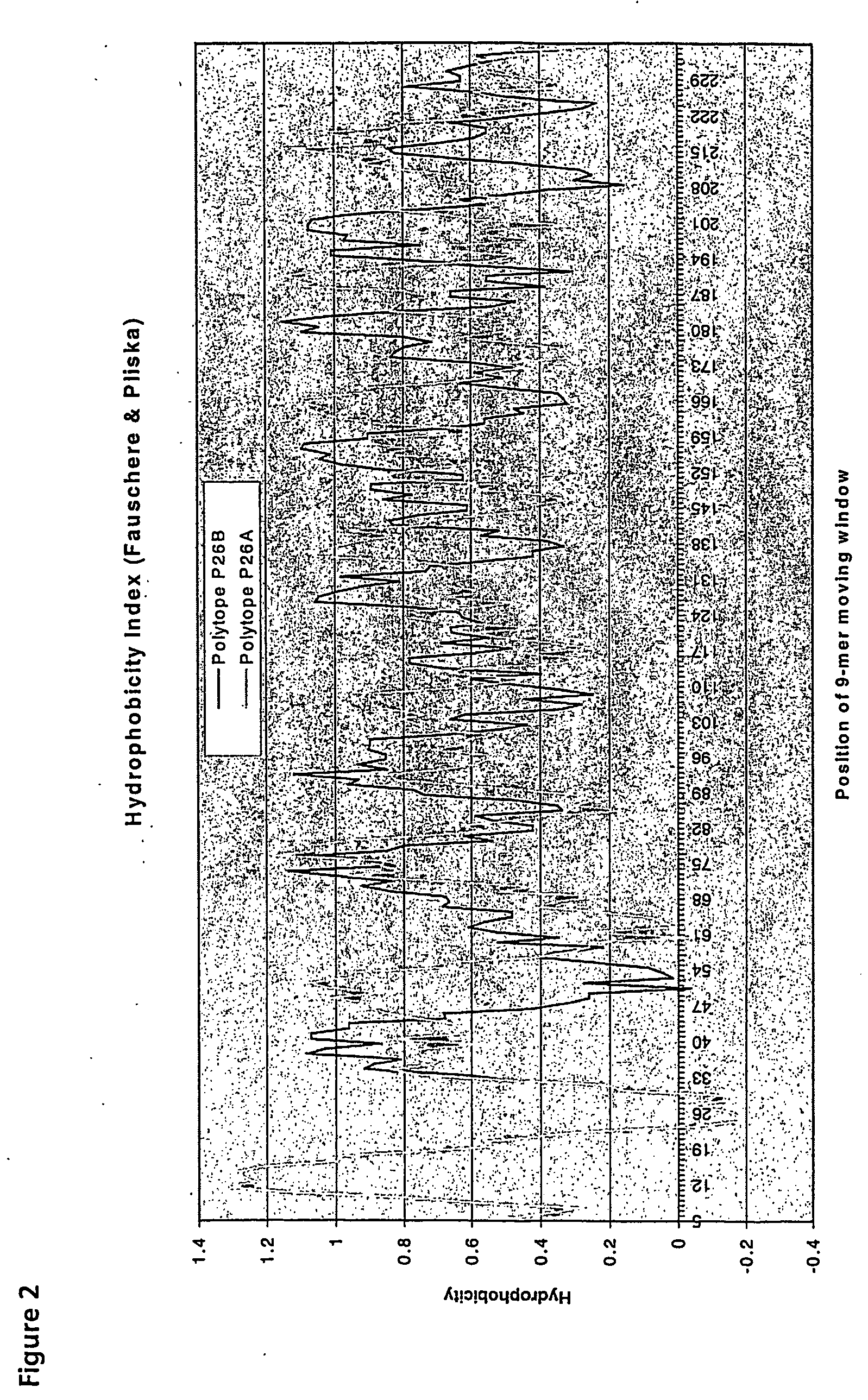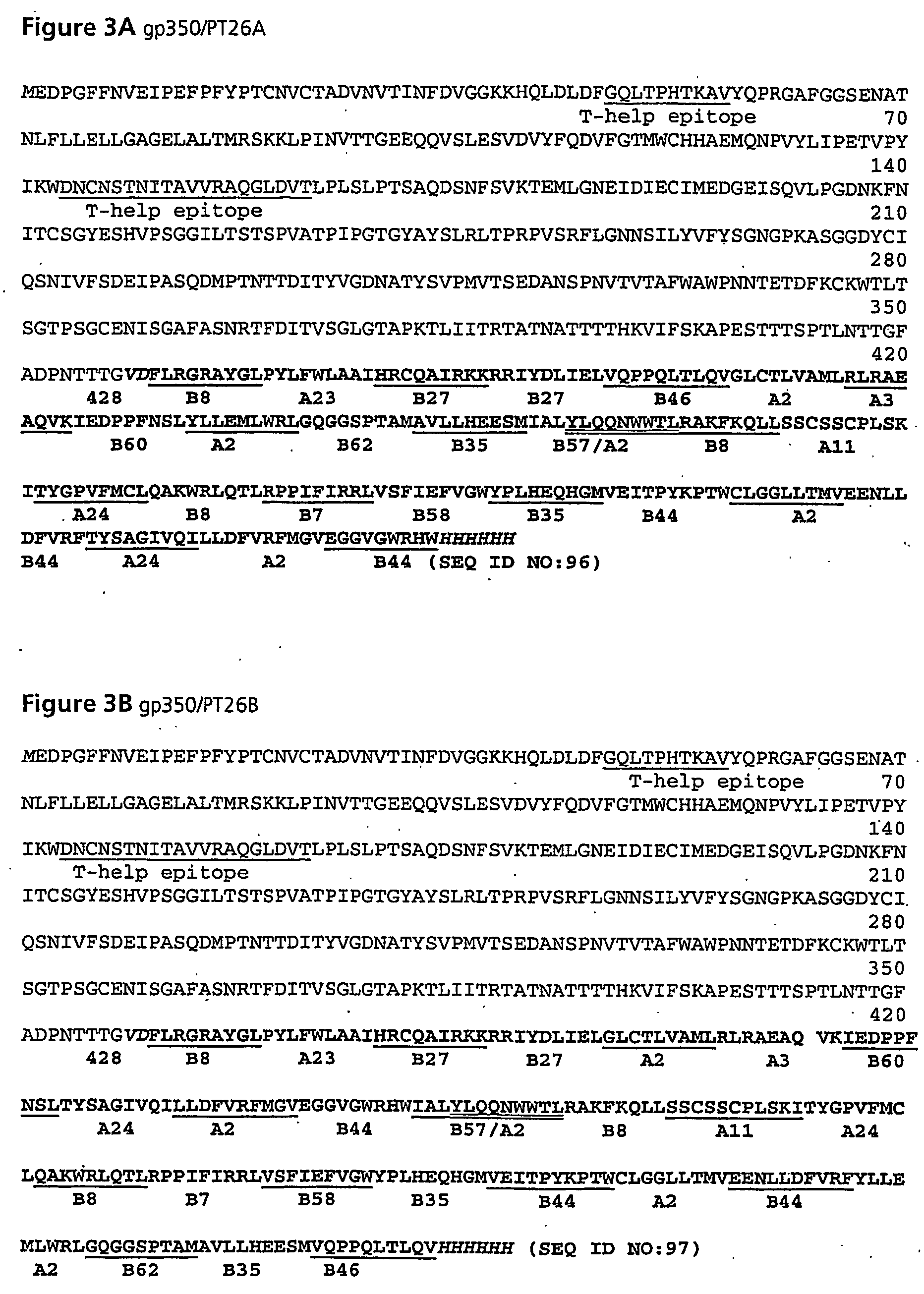Expression of hydrophobic proteins
- Summary
- Abstract
- Description
- Claims
- Application Information
AI Technical Summary
Benefits of technology
Problems solved by technology
Method used
Image
Examples
example 1
EBV Polyepitope Fusions as Vaccine Candidates
Materials and Methods
Epitope Sequences
[0079] The 26 CTL epitopes for inclusion in an EBV vaccine, the proteins from which they originate and HLA type are shown in Table 1.
TABLE 1CTL epitopes included in the EBV polytopesHLA TypeEBV ProteinEpitopeA2LMP2CLGGLLTMV (SEQ ID NO:6)BMLF1GLCTLVAML (SEQ ID NO:7)EBNA6LLDFVRFMGV (SEQ ID NO:8)LMP1YLLEMLWRL (SEQ ID NO:9)LMP1YLQQNWWTL (SEQ ID NO:10)A3EBNA3RLRAEAQVK (SEQ ID NO:11)A11LMP2SSCSSCPLSKI (SEQ ID NO:12)A23LMP2PYLFWLAAI (SEQ ID NO:13)A24LMP2ATYGPVFMCL (SEQ ID NO:14)EBNA4TYSAGIVQI (SEQ ID NO:15)B7EBNA3RPPIFIRRL (SEQ ID NO:16)B8EBNA3FLRGRAYGL (SEQ ID NO:17)EBNA3QAKWRLQTL (SEQ ID NO:18)BZLF1RAKFKQLL (SEQ ID NO:19)B27EBNA4HRCQAIRKK (SEQ ID NO:20)EBNA6RRIYDLIEL (SEQ ID NO:21)B35EBNA4AVLLHEESM (SEQ ID NO:22)EBNA3YPLHEQHGM (SEQ ID NO:23)B44EBNA6EENLLDFVRF (SEQ ID NO:24)EBNA6EGGVGWRHW (SEQ ID NO:25)EBNA4VEITPYKPTW (SEQ ID NO:26)B46EBNA3VQPPQLTLQV (SEQ ID NO:27)B57LMP1IALYLQQNW (SEQ ID NO:28)B58EB...
example 2
EBV Polyepitope Fusions as Nasopharyngeal Carcinoma Vaccine Candidates
Materials and Methods
Epitope Sequences
[0113] The 20 CTL epitopes for inclusion in an EBV-NPC vaccine, the proteins from which they originate and HLA type are shown in Table 5.
Design / Ordering of Epitopes
[0114] An ordered arrangement of CTL epitopes to produce a polyepitope sequence with favourable hydrophobicity characteristics was generated by the method described in Example 1 (i)-(xi).
[0115] The final shuffle involved taking YPLHEQHGM (SEQ ID NO:23) from position 3 and changing with CLGGLLTMV (SEQ ID NO:16) at position 19 to reduce a high hydrophobic index (HI) which resulted from summing epitopes 18, 19 and 20.
[0116] The ordering process for this optimised EBV-NPC polyepitope (EBV-NPCa) configuration is shown in Table 6.
Hydrophobic Index (W) Calculations
[0117] HI values for EBV-NCPa were calculated according to the mathematical expression:—
e=m+n−1
HIm=Σxe
e=m
(where m=group number, n=group size, e=...
PUM
| Property | Measurement | Unit |
|---|---|---|
| Fraction | aaaaa | aaaaa |
| Length | aaaaa | aaaaa |
| Hydrophobicity | aaaaa | aaaaa |
Abstract
Description
Claims
Application Information
 Login to View More
Login to View More - R&D
- Intellectual Property
- Life Sciences
- Materials
- Tech Scout
- Unparalleled Data Quality
- Higher Quality Content
- 60% Fewer Hallucinations
Browse by: Latest US Patents, China's latest patents, Technical Efficacy Thesaurus, Application Domain, Technology Topic, Popular Technical Reports.
© 2025 PatSnap. All rights reserved.Legal|Privacy policy|Modern Slavery Act Transparency Statement|Sitemap|About US| Contact US: help@patsnap.com



